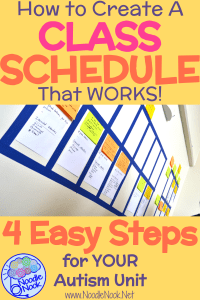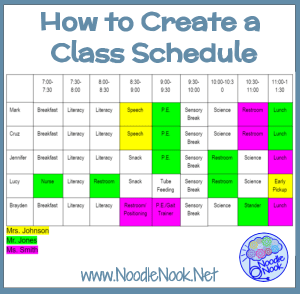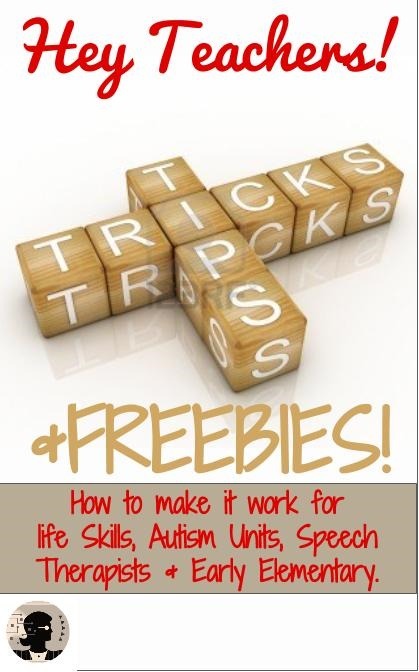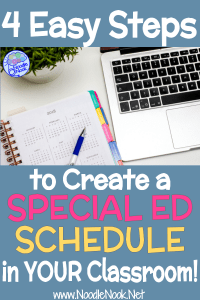4 Steps to a Successful Schedule
Best place to start with your classroom setup is getting your schedule set and posted in the classroom. That sounds all well and good, but there are several sub-steps to setting up a good schedule. In order to make a schedule that will be something you can stick to and not revamp over and over, there are a few simple steps.
1. Schedule Non-Negotiables
Start with the non-negotiables, like times for medications and nurses visits, feeding and snack times, as well as restroom/changing times for students and staff breaks for adults. Most of these are fixed on the schedule. Wherever you have locked in events, add them in.
2. Add Academics
Next, add in the academic blocks. Where you see the least amount of those non-negotiables for most of your students, set out your literacy and math block. Those are the most important times and need the least disruptions. We will work out what is happening in those blocks in just a few.
After the literacy and math have been added, put in the other academic classes, like science and social studies. If you have to fill in specialty classes, consider where lunch and recess/specials occur and add them in thoughtfully. If your students get super ramped up when they get back from lunch, then putting a high energy activity right afterwards may be a recipe for failure. Just think about when students will be most focused.
3. Thoughtfully Put In Specials
Then, fill in with special times like sensory breaks (maybe after recess, lunch, or PE), snack times, and transitions. This is also where you want to add in times for special equipment like gait trainers, positioning tables, and standers. Or, if needed, other things you need to address but are not locked into certain times.
You will want to steer away from too much positioning during your two big academic blocks unless you are able to put student into their necessary equipment before the lesson starts and allow them to remain in it until the block ends AND they are still able to participate while in it. If that is not an option, then scheduling during these special times is best.
Now, back to that academic block.
4. Perfecting Academic Times
From the very start, be sure that you are putting in some structure and routine into the academic blocks you set out. If you are not in a self contained classroom, that likely means you are working with a bell schedule and students rotating to you. Perk up your ears, this is for you too.
You need to set up station rotations in your classroom. This will allow you to sit down purposefully to do some quality teaching with a smaller group of students every day. I suggest you plan out about 12-18 minute stations and either rotate the students to get them up and give them a brain break, or rotate the staff so students are not always working with the same person all day long.
Start with at least two rotations, three is best. As you are crafting what to do in those rotations, the time with you should be dedicated to new skills, first time instruction, and strategy implementation for skill building. Another rotation could be with an aide to focus on cementing basic skills or review. If you have an aide for a third rotation, great. If not, then plan on having an independent station.
I can tell you from years of I-wish-I-had-done-that-differently, doing station rotations is better than any large group instruction will ever be. It makes the days go quicker, it makes your lessons more manageable, and also makes what you do with each student more meaningful.
Getting Going
I also love the versatility a center schedule gives me. They work best with the type of students we work with. And you will also see how much more effective it makes you. So, get started on that visual schedule by going through these ease steps:
- Schedule Non-Negotiables
- Add Academics
- Put in Specials
- Organize Stations
That is all it takes… and if you are looking for visuals to make the visual schedules your students need, check these out!
Now, stay strong and teach on!






